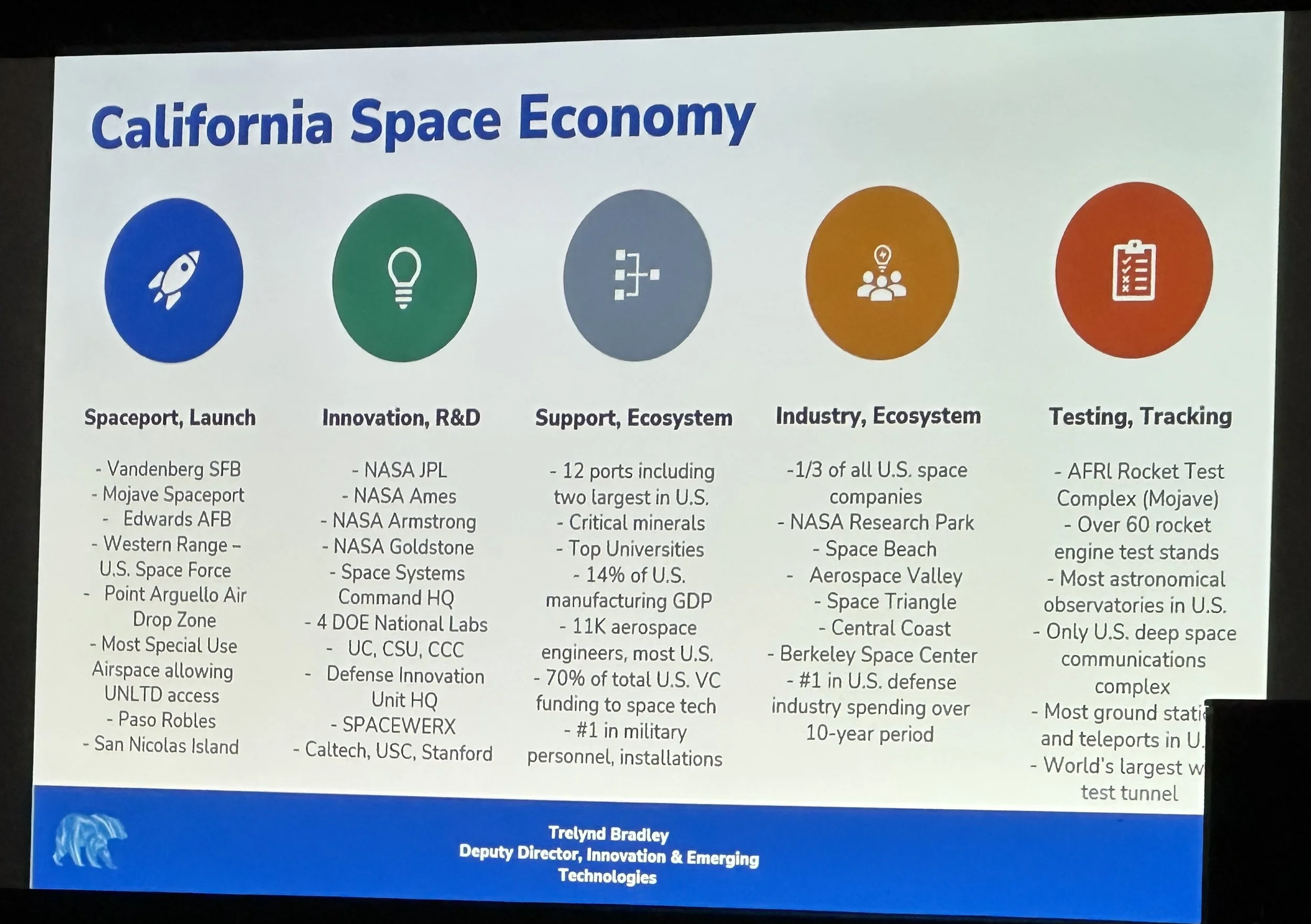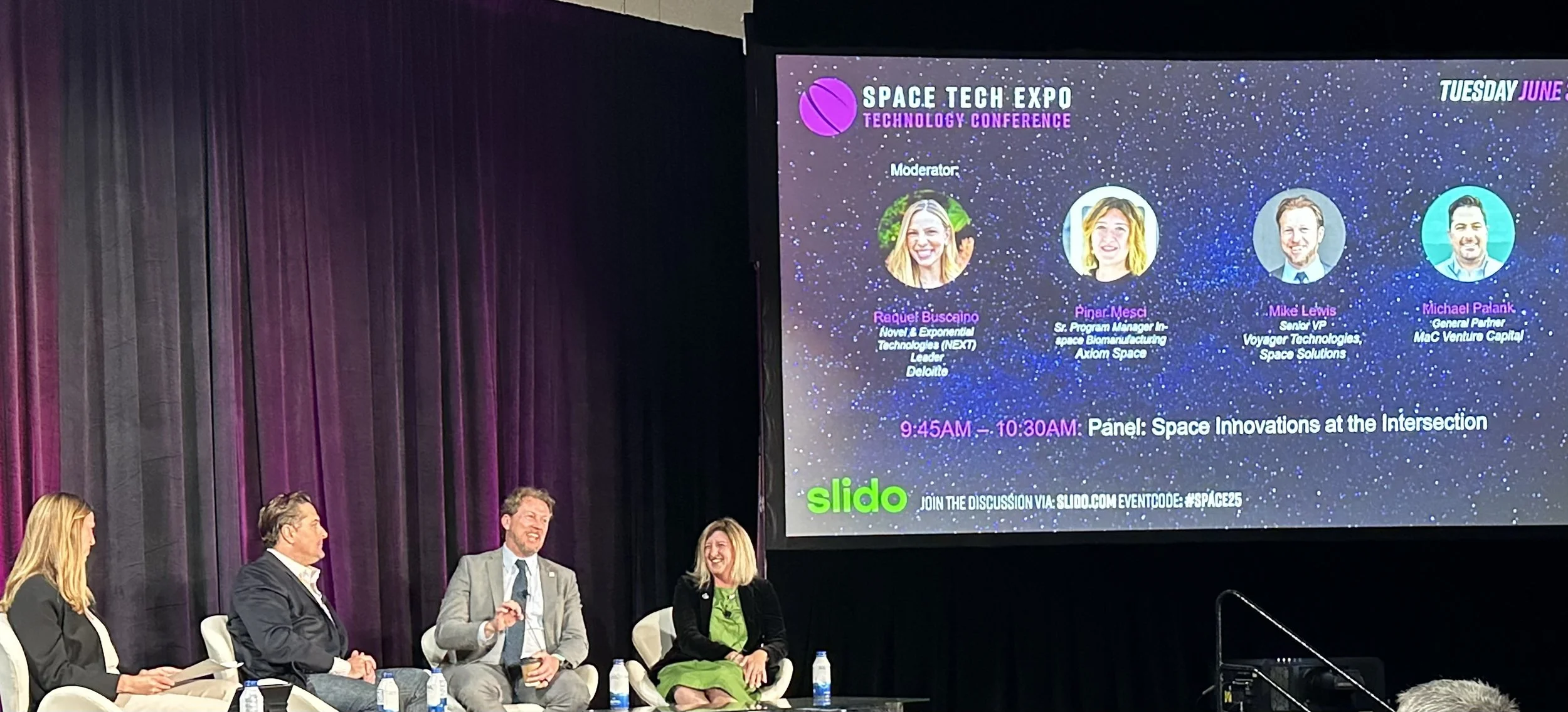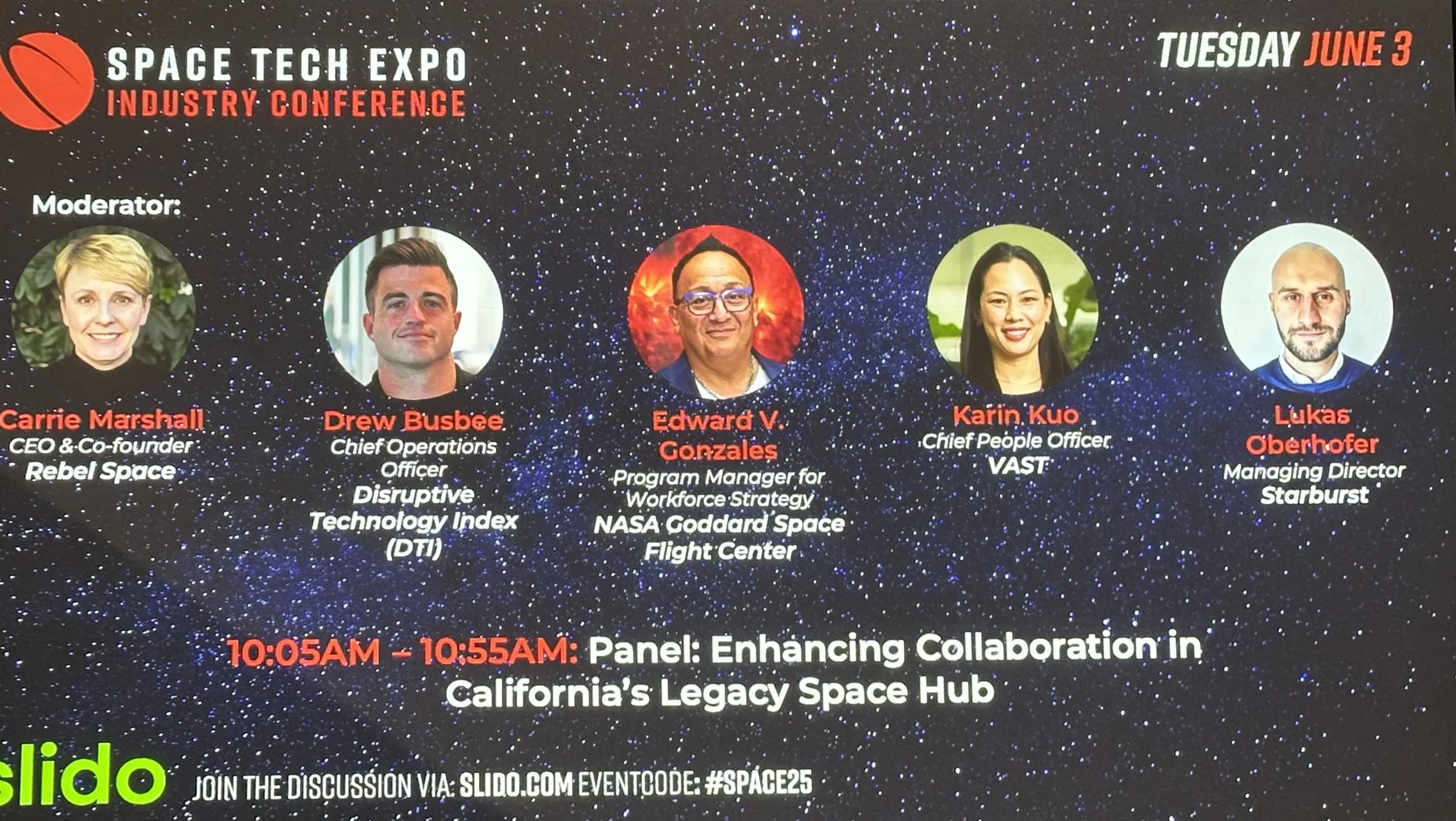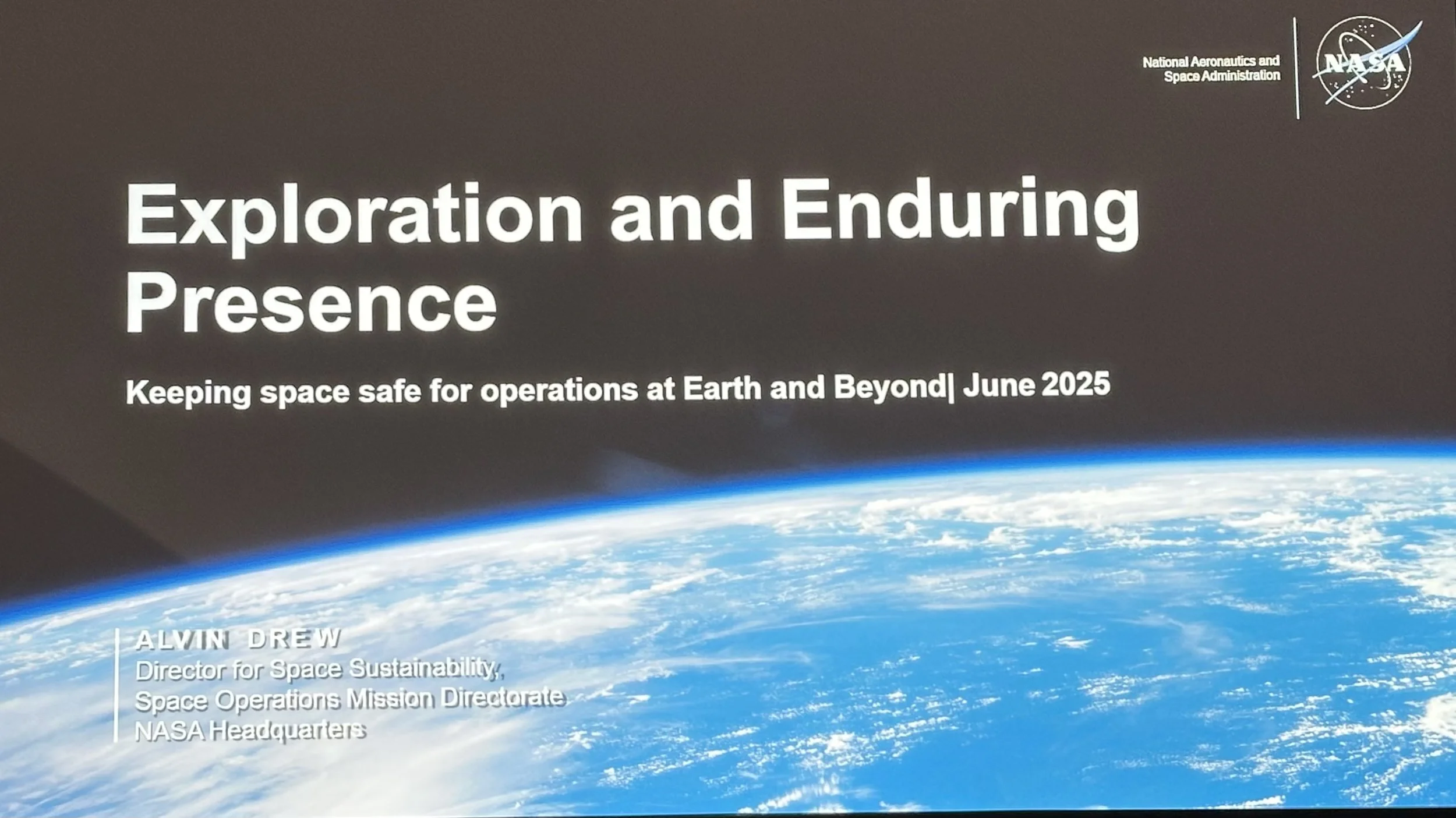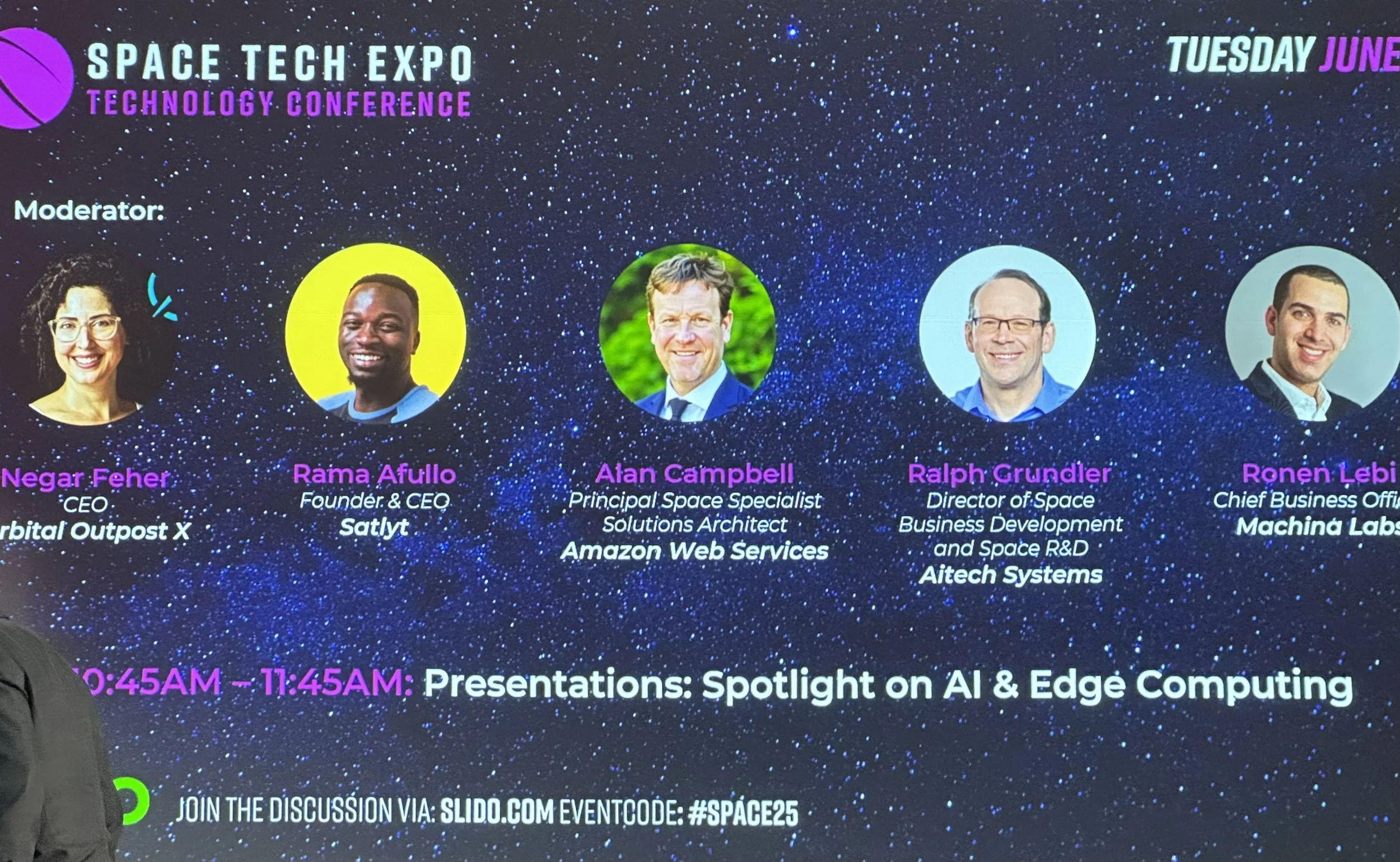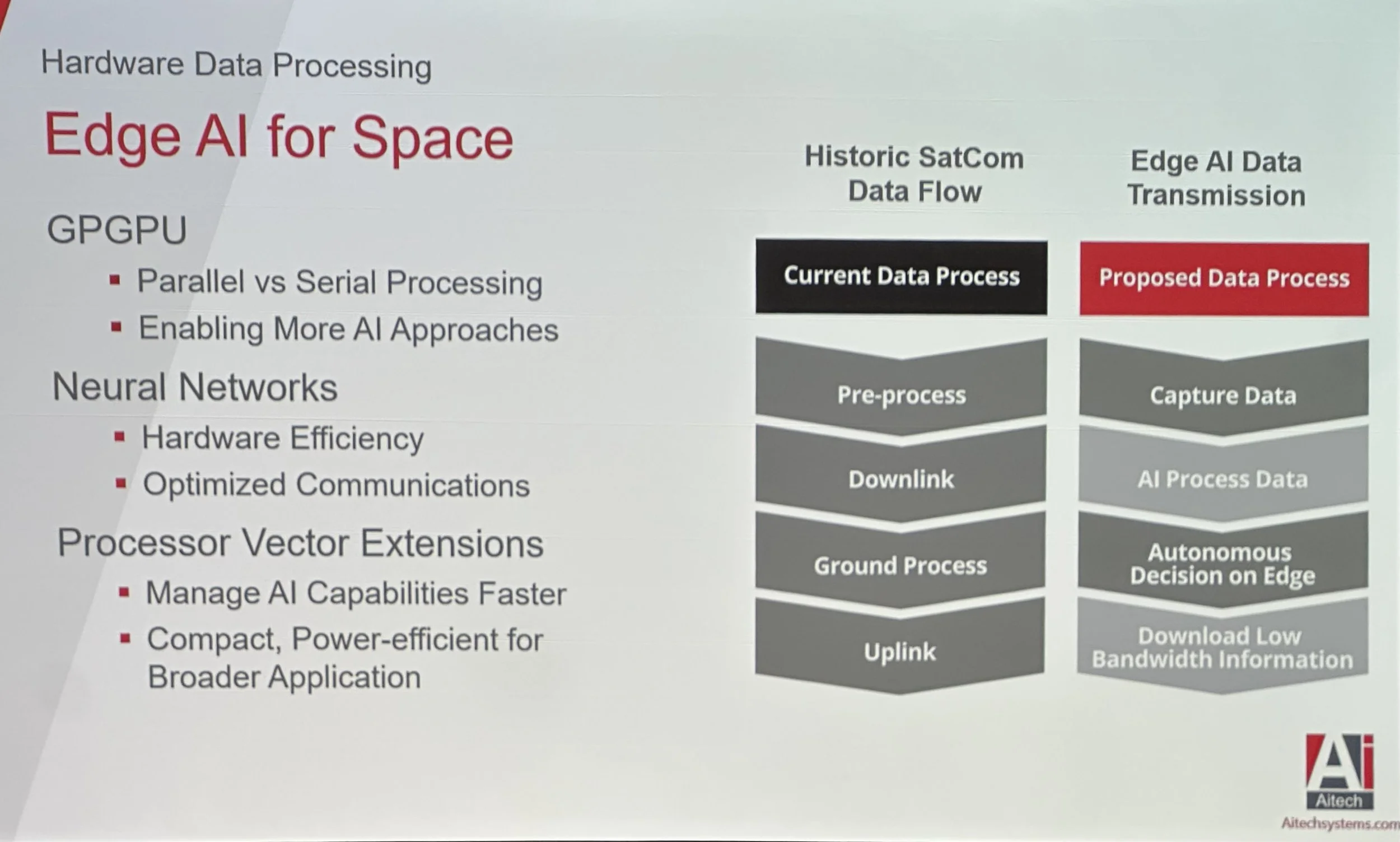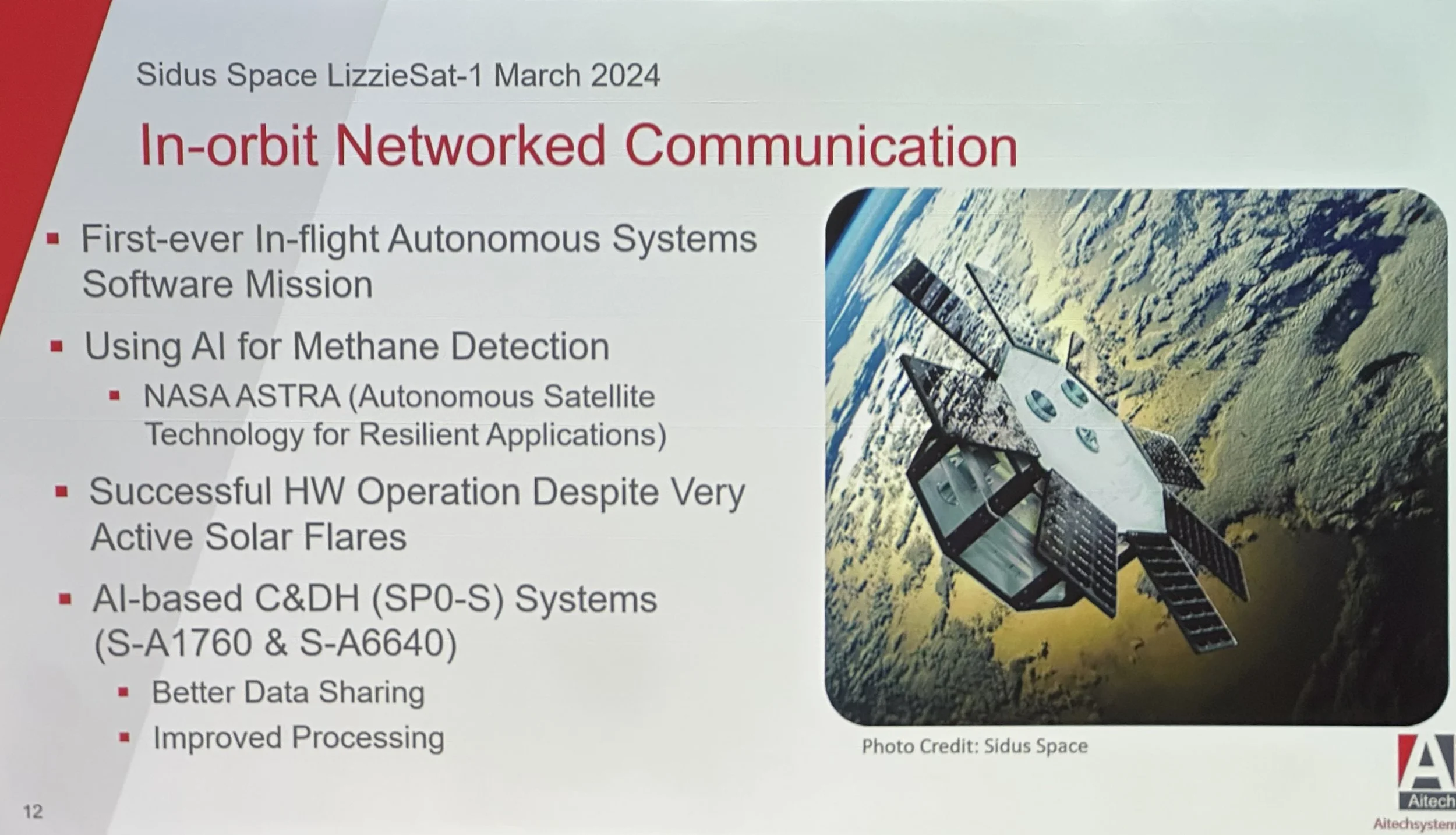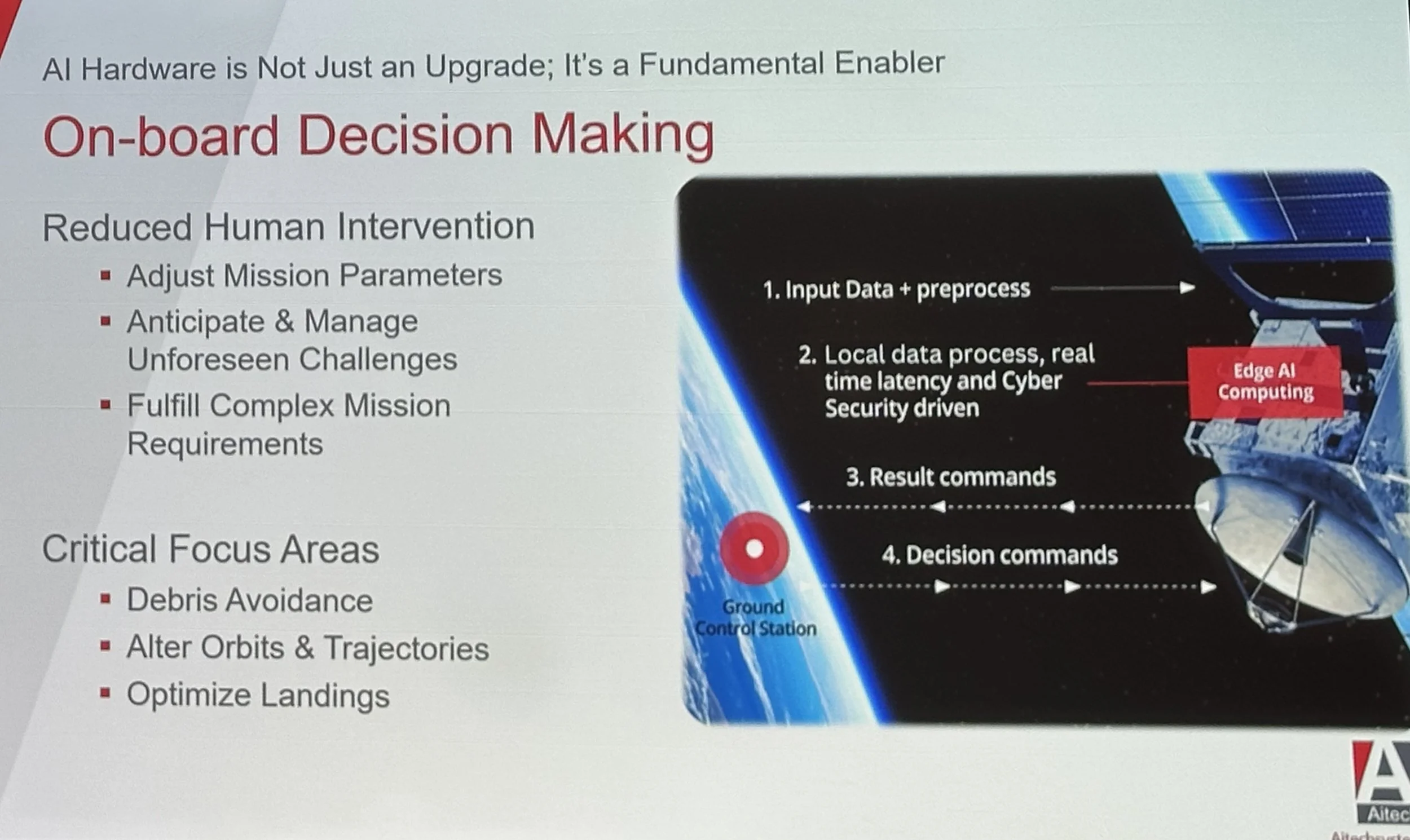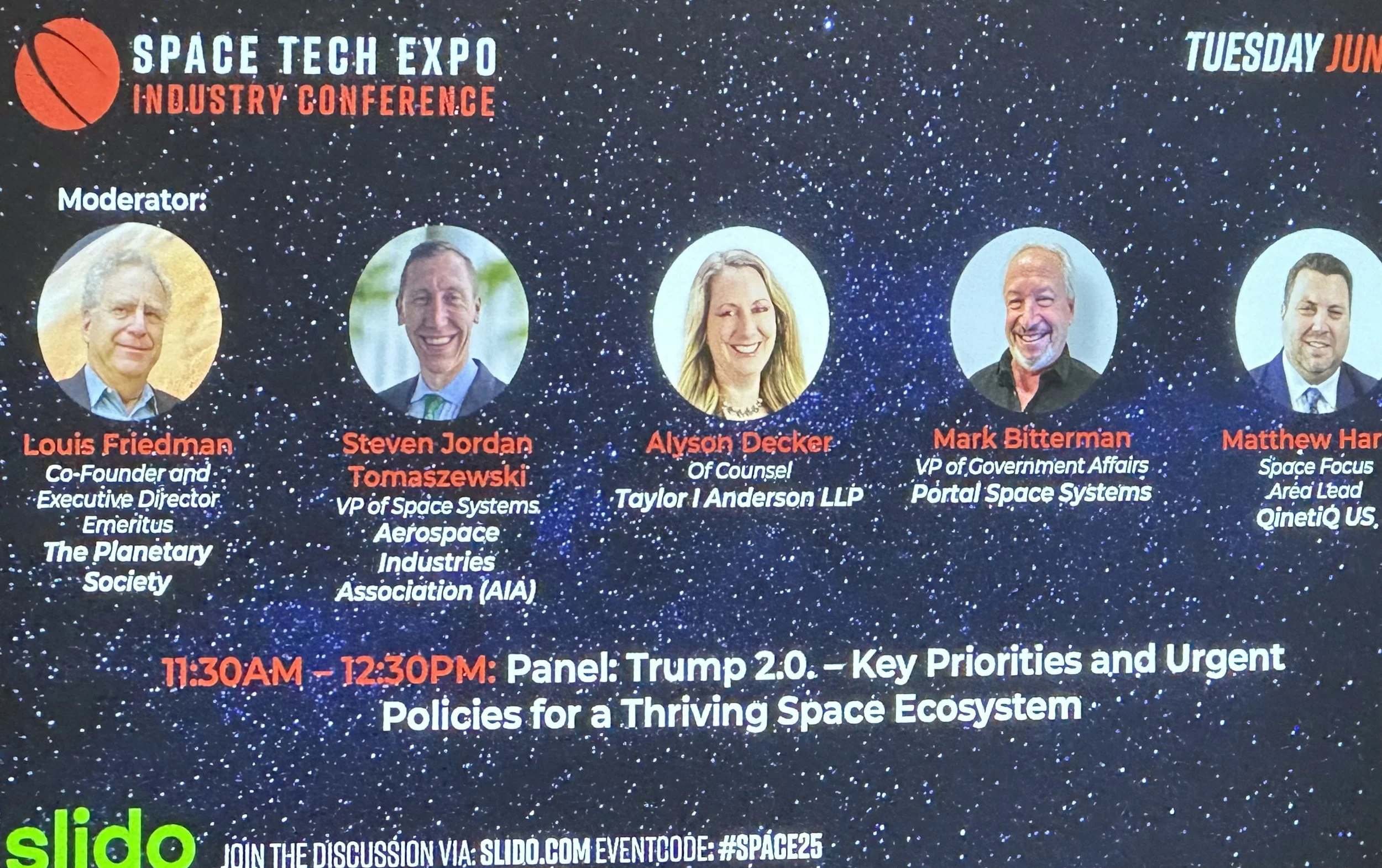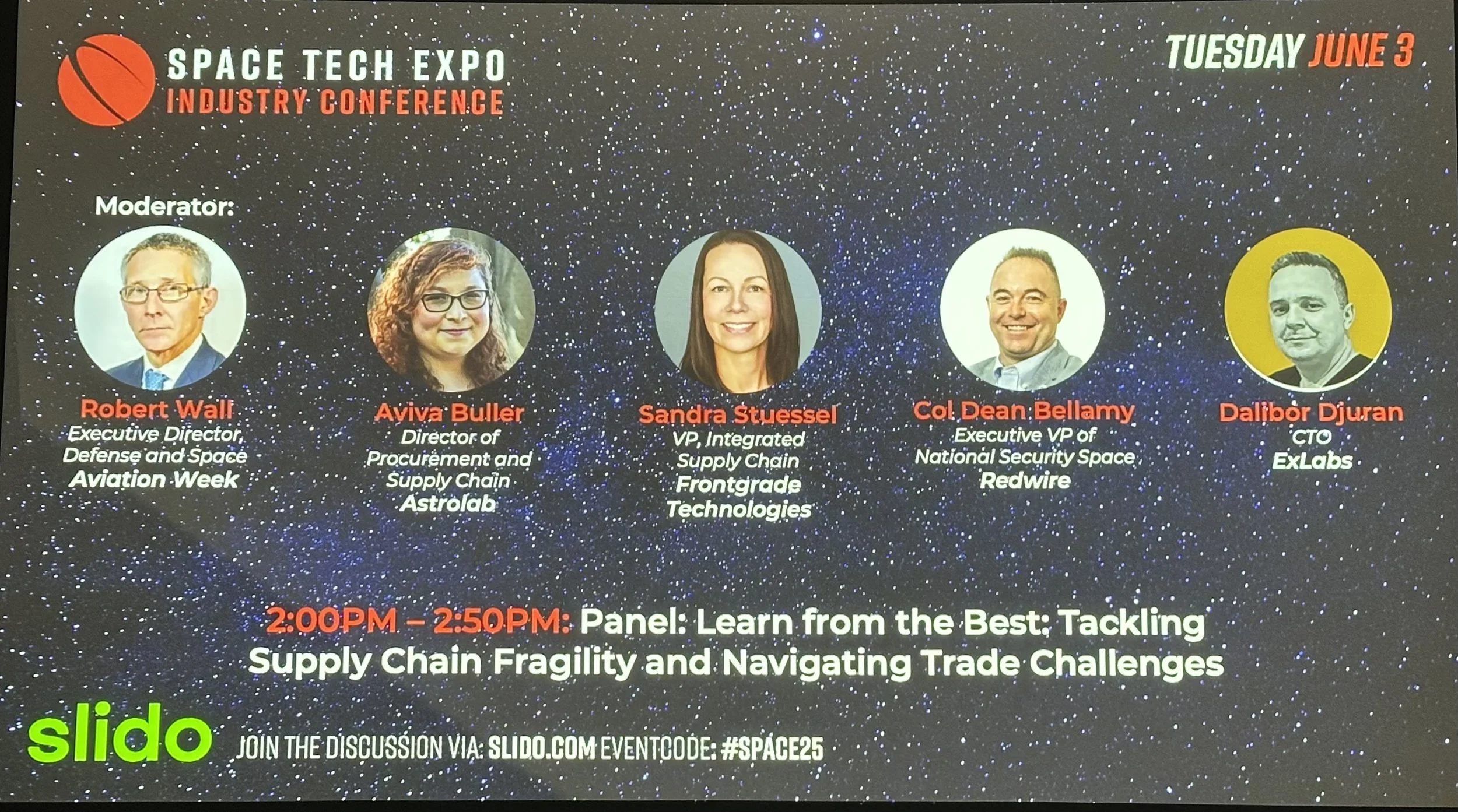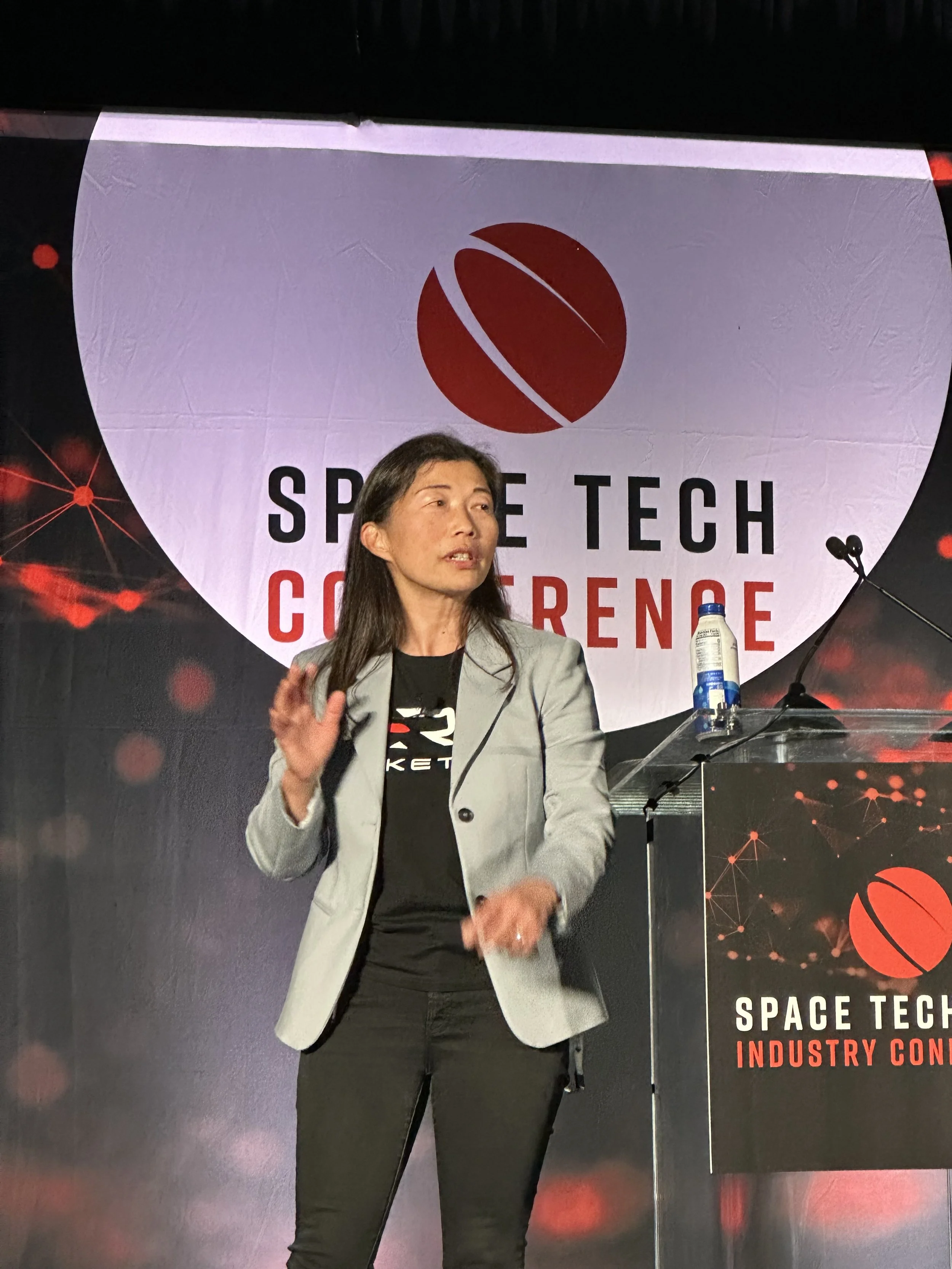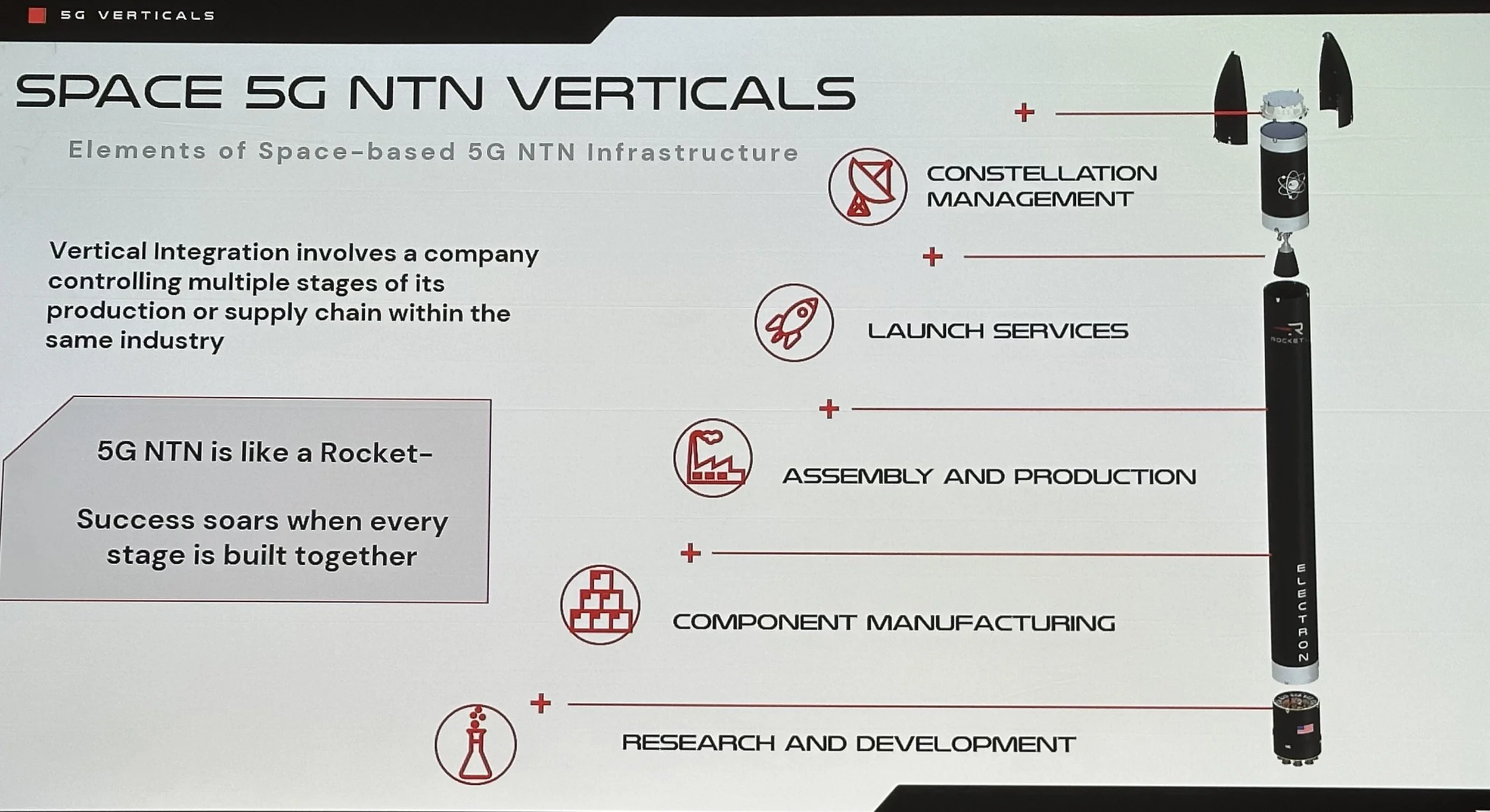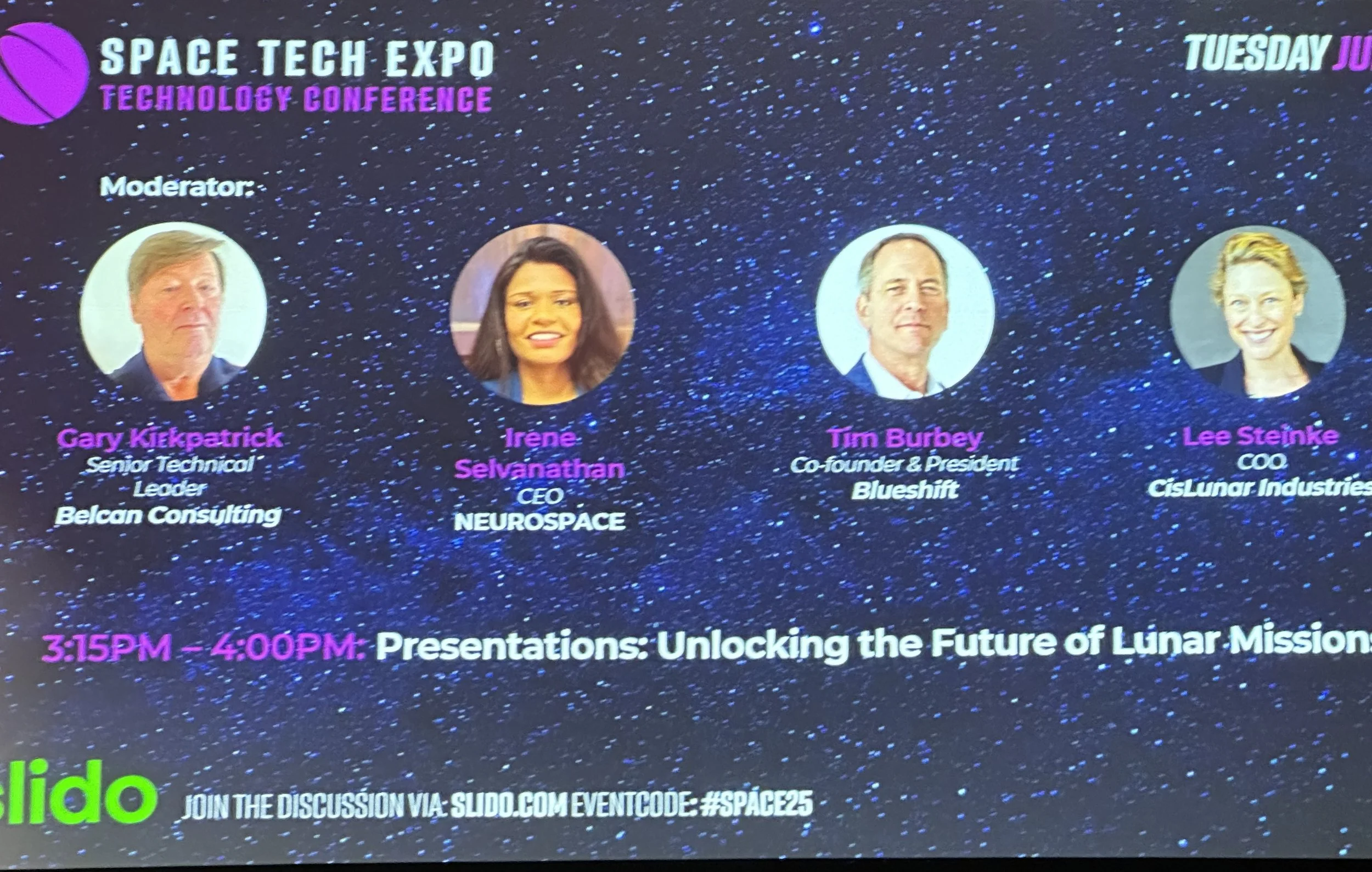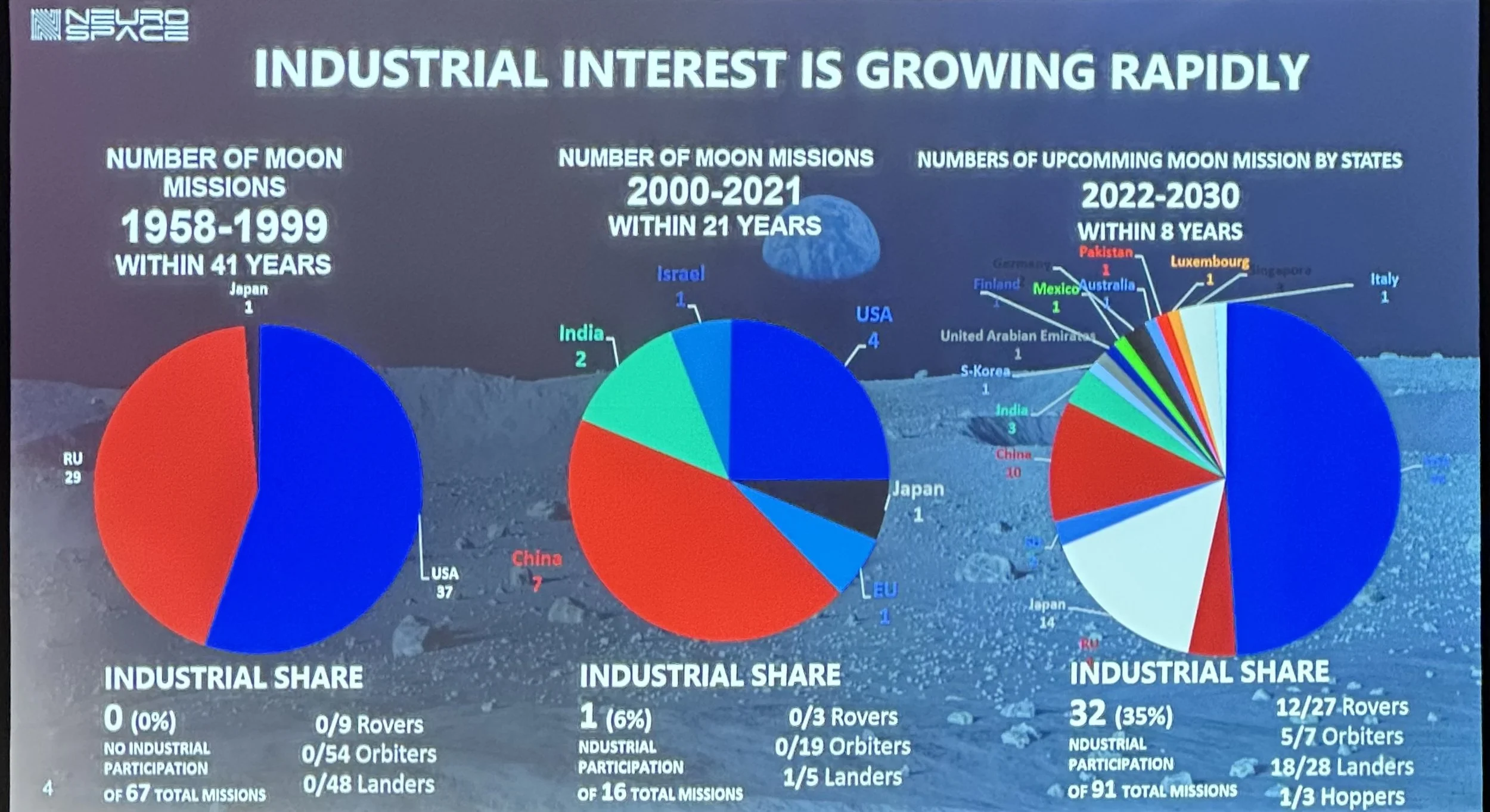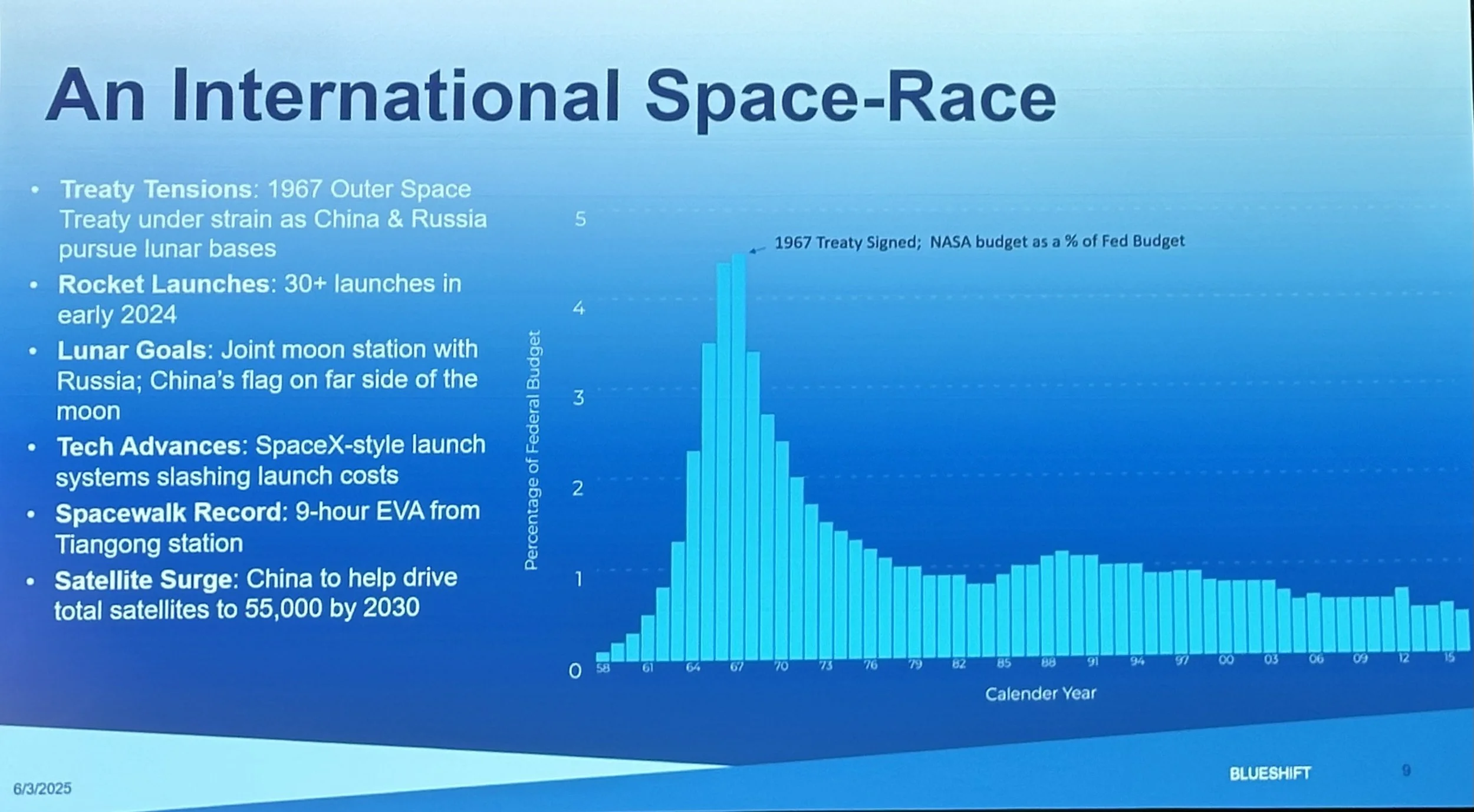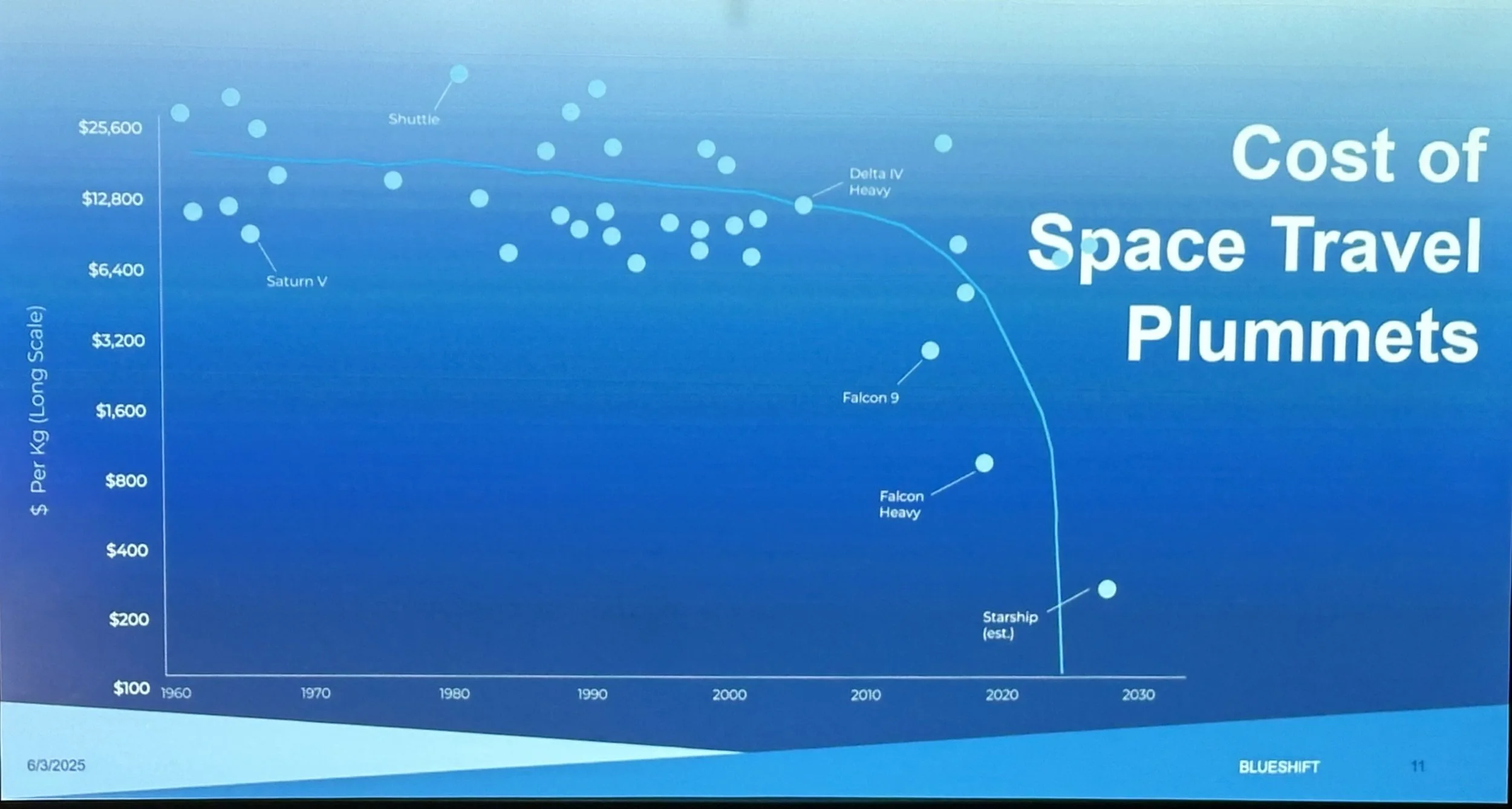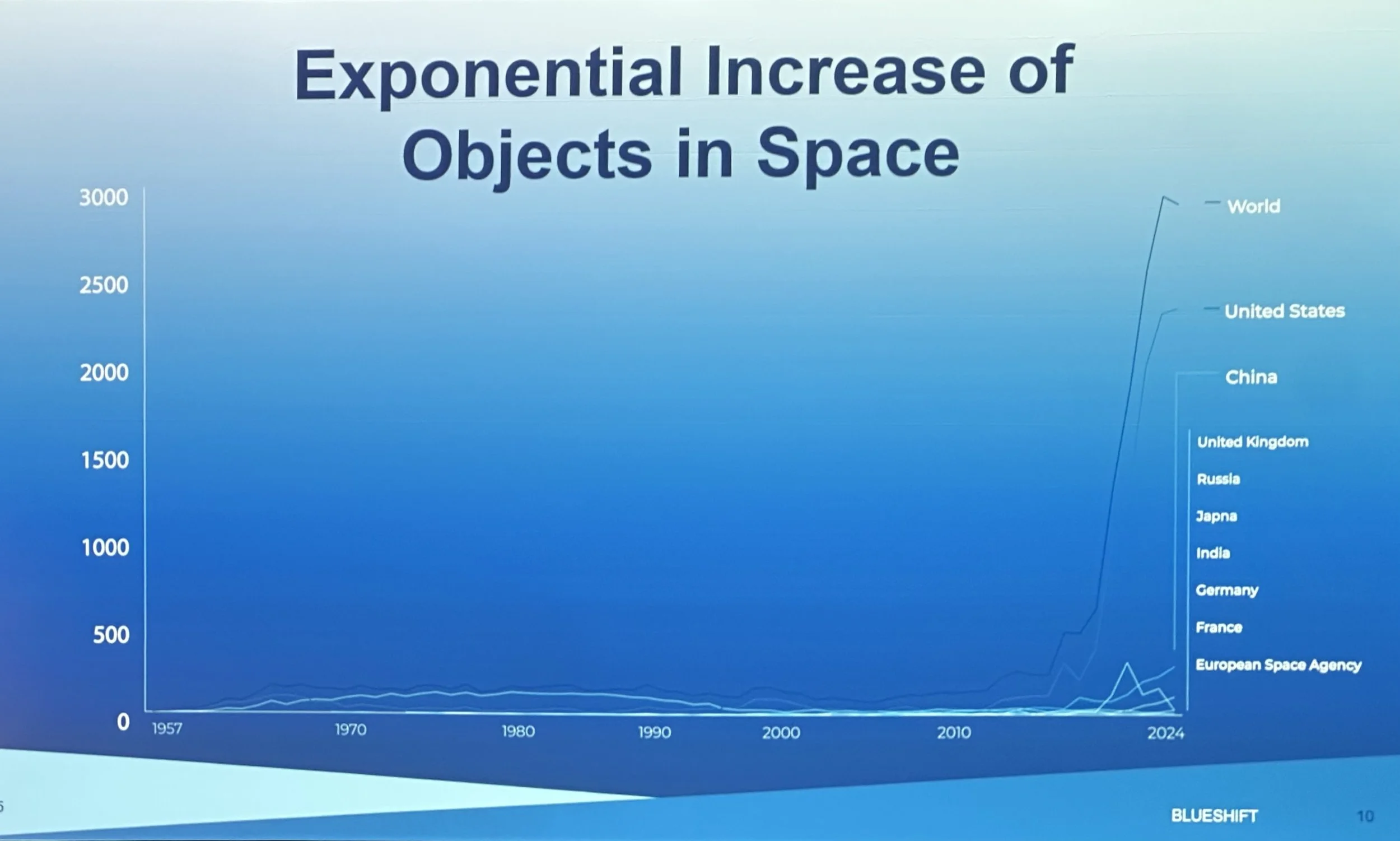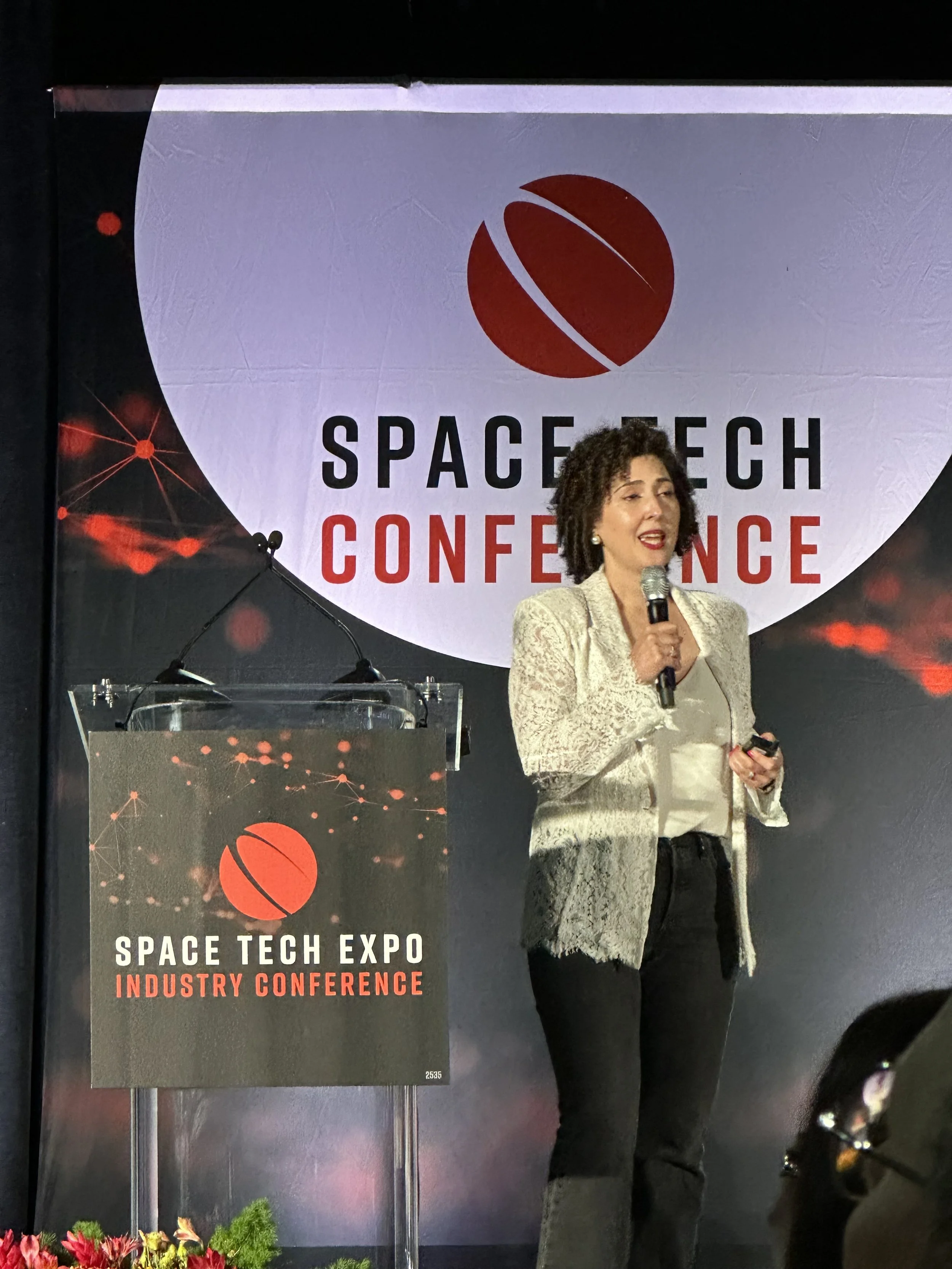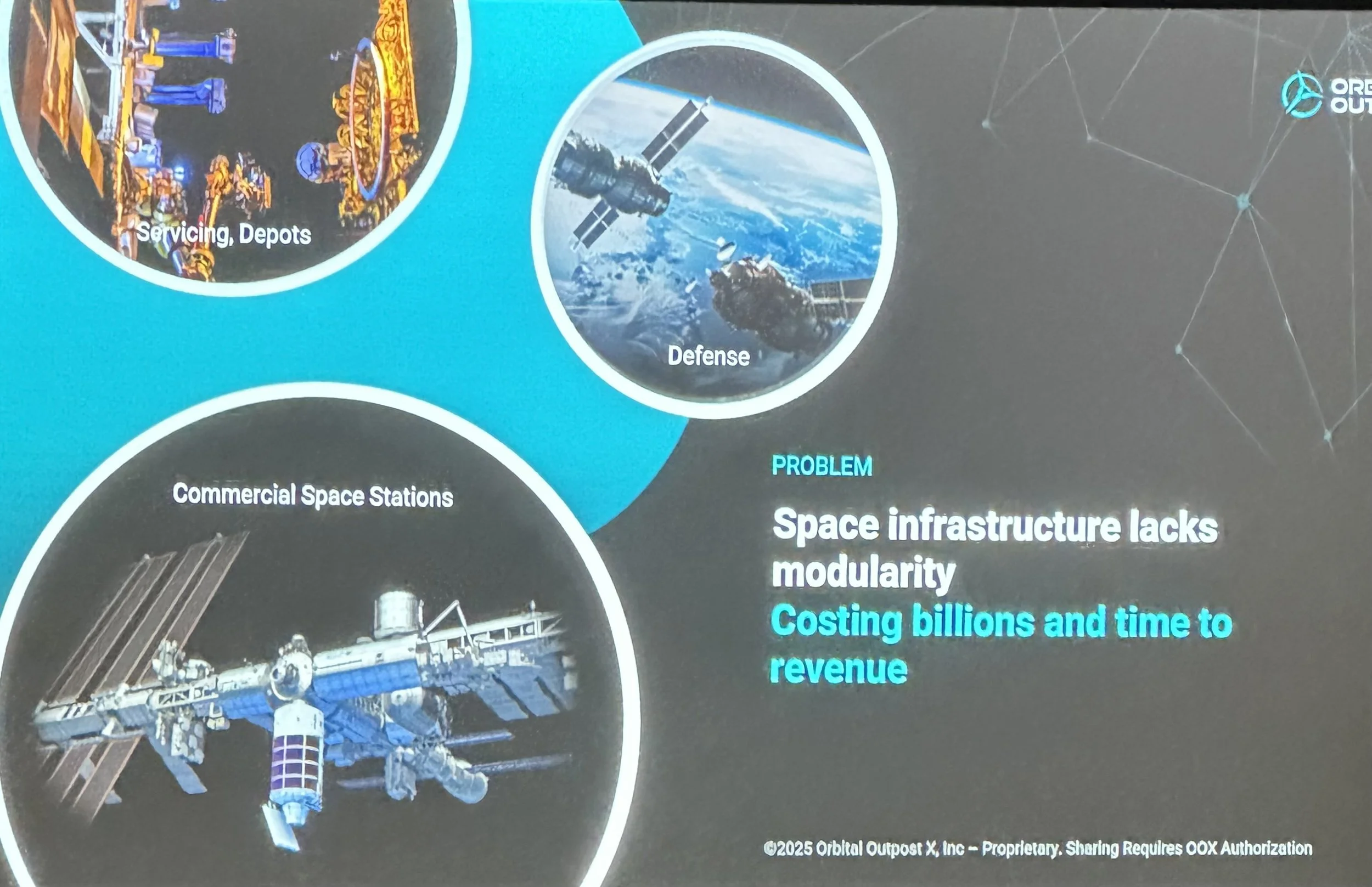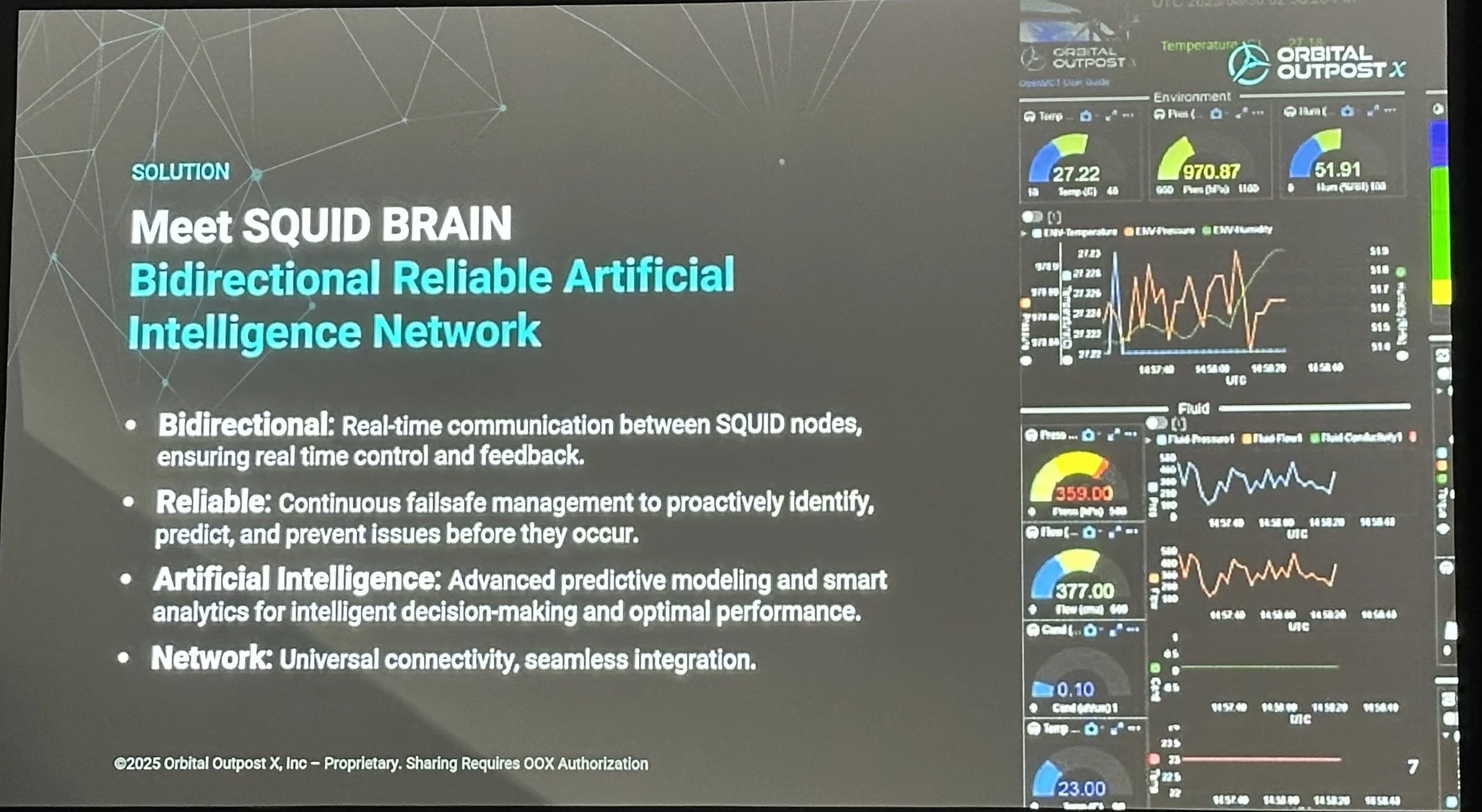To the Moon and Beyond, Earthlings. 🛸
“HAL: Well, certainly no one could have been unaware of the very strange stories floating around before we left. Rumors about something being dug up on the moon.”
Stanley Kubrick & Arthur C. Clark. 2001: A Space Odyssey. 1968.
LBC's Space Tech Expo USA Day 1.
Lesson One: Investible Lunar Stellar Opportunities.
Day 1 of LBC's Space Tech Expo USA featured innovators and operators sharing their insights about the investible commercial importance of the moon. The lunar economy can be thought of in three parts: 1) On the moon, 2) Around the moon, and 3) Between Earth and the moon.
On the moon. The moon is a critical link in the Space supply chain. It is relatively close and has resources that are valuable in Space and on Earth. In Space, the moon’s water can be used as fuel as well as subsistence for human life. Not having to go back to Earth for this critical resource will save a ton of money and extend the life of Space missions.
Helium-3. This is valuable stuff for Space and Earth priorities. It can be used for nuclear fusion to power Space mobility and manufacturing. It can also be used for the following: cooling for quantum computing in Space, medical imaging, monitoring of smuggled nuclear materials across borders, and oil and gas exploration. Its current value is estimated at about $4 billion per ton.
In addition to critical resource extraction, key elements of the on the moon lunar economy include infrastructure development (factories and habitat) and support.
Cislunar Space. Around the moon there is an anticipated communications marketplace. Between Earth and the moon there is an expected marketplace of commercial launches for transportation, resupply, and the retrieval of “derived value”.
The moon is relatively close and there are a lot of opportunities to serve the lunar economy. Yet there are challenges to overcome. The moon has 2 weeks of darkness (14 Earth days equals 1 lunar day), harsh temperature swings (-180C to 120C), and crazy lunar dust that easily damages equipment.
The International Space Station (ISS) is closer (250 miles from Earth vs 239 thousand miles) and less harsh. Time may be limited for the ISS but it still has tremendous value.
And we know that there are a whole lot of Lower Earth Orbit (LEO) economic opportunities.
The key to investible opportunities in Spacetech and in any sector is to address the gaps, anticipate broad market opportunities, and never forget the practical business case regardless of how awesome the tech is. Spacetech founders, please don’t cut short customer discovery. There is a range of customers out there. Talk to them often, every step of the way. This is a relationship driven business and it is totally okay to build low to high tech (even in deep tech) as you learn and raise the cash you need.
Back to the moon. If you go there, you could wear a Prada designed spacesuit. That is pretty cool.
Who’s in?
Lesson Two: Every Company is a Space Company.
My favorite quote of the day came from Mike Lewis, Chief Innovation Officer of Nanoracks – Powered by Voyager Space:
“Every company is a space company. They just haven’t figured out their strategy for Space.”
Translation: Satellite dependence, AI driven predictive earth observations from Space, and a host of R&D considerations are opportunities for everyone.
Who can claim the range of opportunities in the new Space race? There is a treaty … from 1967.
We can all use the vast resources Space offers but no one is supposed to own them. Claims of ownership, which you know is coming, makes for a tricky situation as more countries and private entities get into Space and make contentious and/or overlapping claims.
China, Korea (South), Japan, India, and Russia have moon programs, in addition to the US. There are 12,000 satellites in Space right now. This number is expected to grow five-fold over the next 5 years.
The Space race is on with the usual suspects. The need for and ability to create critical infrastructure in Space for longer, more advanced, and more frequent missions is taking the geopolitical competition to a new level.
Lesson Three: Where to Innovate and Make Money in Space as a Startup (and Capital Allocator).
And you thought I was just going to keep talking about the moon and the Prada spacesuit …
💫 Light based computing, real-time NLP communications, robotics with vision, and space servicing are areas of sought after innovative tech. Hyperspectral imaging, on-orbit compute/data centers, and the need for better cooling mechanisms thereof are important enablers of the lunar economy and beyond. So is cyber security. Space innovators are taking cues from the financial services industry on this one. Interesting to see the innovation sourcing increasingly shift from government to private resources. ( Daniel Goetzel, Greg Rattray, and Jose M Seara, you know what I am talking about here.)
There are cottage industry opportunities for everything from where you are standing or sitting right now to extraterrestrial facilitating technologies and resources for earthlings.
There are venture capital investible opportunities suitable for a range of risk tolerances and investment return horizons. Never lose sight of the diverse applications of the tech, the evolving business case, and the imperative for collaboration.
Nobody does this alone.
For deep tech lovers- lighter, faster, cheaper, more energy efficient, and more precise propulsion systems are very desirable. There is usually a buyer for technology that lowers the cost and raises the efficiency of a space mission. Smaller, modular, and easier to operate is a plus.
For onboard systems, remember that what seems intuitive on the ground is not so intuitive when an astronaut adjusting to fluid imbalances in their head is trying to figure it out. Space techies, be kind. Make it easy and avoid the disappointment of an astronaut accidentally breaking stuff that you didn't make sufficiently user-friendly. Think about how hard it is to get your equipment on board in the first place and utilize an iterative feedback loop early in the design process.
Build collaboratively. The tech is there to enable interoperability and ease of integration.
More on how to make money in Space as a startup or capital allocator in my next article covering Day 2 of the Spacetech Expo.
What does it mean to service assets in Space?
On the hardware side, there are emerging space utilities to extend the life of missions by offering refueling/supply, repair, coordination, and on-orbit build options. Interesting ones to follow are David A Barnhart’s Arkisys, Johannes Gross’s Planetary Utilities, and Negar Feher’s Orbital Outpost X.
On the software side, the opportunities are endless for efficient interfaces that are human directed, autonomous, and AI driven in a complex way. Advances in Artificial General Intelligence (AGI) suggest a potential liberation from the typical dependence on human interactions in space missions to some extent. This may come in handy on extended missions.
AGI? You know what’s coming next.
“BBC Interviewer: HAL, despite your enormous intellect, are you ever frustrated by your dependence on people to carry out actions?
HAL: Not in the slightest bit. I enjoy working with people …
Dave: Open the pod bay doors, HAL.
HAL: I’m sorry Dave. I’m afraid I can’t do that …
The mission is too important for me to allow you to jeopardize it.”
2001: A Space Odyssey. 1968
The Future of the Space Economy.
I would like to quote Michael Palank of MaC Venture Capital:
“I take my cue from science fiction because a lot of things come true.”
For sure.
“But even the age of the Machine Entities passed swiftly. In their ceaseless experimenting, they had learned to store knowledge in the structure of space itself, and to preserve their thoughts for eternity in frozen lattices of light.
They could become creatures of radiation, free at last from the tyranny of matter.”
Stanley Kubrick and Arthur C. Clark. 2001: A Space Odyssey Screenplay. 12/9/65. Hawk Films Ltd.
I could quote all day from this.
Here are highlights of some of the panels from Day 1 which offered lively interactive discussions. I rushed from one panel to the next to capture as many of these discussions as I could.
Opening Keynotes
Lucius Martin, Deputy Mayor, City of Long Beach. Great work, Lucius!
Trelynd Bradley, Deputy Director, Innovation & Emerging Technologies, California Governor’s Office of Business and Economic Development.
Summary: This is the place to be!
Space Innovations at the Intersection
Moderator: Raquel Buscaino, Novel & Exponential Technologies (NEXT) Leader, Deloitte.
Panelists: Pinar Mesci, PhD, MSc of Axiom Space (founded by Columbia University Alum Tejpaul Bhatia who likes Prada), Mike Lewis of Nanoracks – Powered by Voyager Space, and Michael Palank of MaC Venture Capital.
Really great moderating, Raquel, on both days! Excellent insights from the panelists. Pinar is all-in on interplanetary ambitions and an on-orbit Space university for doctoral candidates.
Enhancing Collaboration in California’s Legacy Space Hub
Moderator: Carrie Marshall of Rebel Space Technologies
Panelists: Drew "Murph" Busbee of Disruptive Technology Index ( DTI ), Edward Gonzales of NASA Goddard Space Flight Center, Karin Kuo of Vast, and Lukas Oberhofer of Starburst.
From Earth to the Moon and Mars: Managing Space Debris in NASA’s Operating Environments
Moderator: Lee Steinke of CisLunar Industries
Presenter: Alvin Drew, Director of Space Sustainability at NASA - National Aeronautics and Space Administration.
Spotlight on AI & Edge Computing
Moderator: Negar Feher of Orbital Outpost X
Panelists: Rama Afullo of Satlyt, Ronen Lebi of Machina Labs, Alan Campbell of AWS, and Ralph Grundler of Aitech Systems
Slides of interest from Aitech Systems :
Trump 2.0- Key Priorities and Urgent Policies for a Thriving Space Ecosystem
Moderator: Louis Friedman of the Planetary Society
Panelists: Matthew Harris of QinetiQ US, Steven R. E. Jordan Tomaszewski of the Aerospace Industries Association, Alyson Decker of Taylor Anderson LLP, and Mark Bitterman of Portal Space Systems
My take is that the funding landscape has abruptly changed but the trend is not new. The public payor dependence has shifted and it is not where the big dollars are anyways. This is a commercially driven business today.
Grants are super useful and definitely necessary for heavy research driven innovative technical solutions. No doubt that government and related university funding has played an immensely important role. It is indeed critical to support this historical legacy with agility.
Yet we are facing new realities and we need to move quickly.
Spacetech is not all long cycles and risky tech. A lot of new hardtech is but there are lower risk, high reward opportunities with 5-15 year horizons to realize commercial value. Venture funding will follow accordingly. Private capital will support commercial opportunities as capital allocators learn how to invest in this sector historically driven by lengthy R&D cycles of deep, risky tech. Darren Eng of the Los Angeles Venture Association is working on educating angel and institutional investors in this area. So am I.
Tackling Supply Chain Fragility and Navigating Trade Challenges
Moderator: Robert Wall of Aviation Week Network
Panelists: Aviva Buller, MBA of Astrolab, Sandra Stuessel of Frontgrade Technologies, Dean Bellamy of Redwire Space, and Dalibor Djuran of ExLabs
I have done a lot of supply chain work and I was encouraged to hear the focus on keeping an open dialogue as both parties of a supply chain node work to figure out their needs, options, and capabilities. The balance between nurturing few relationships versus keeping the business competitive for product and cost agility always comes up.
At the end of the day, both parties need to be able to count on each other to deliver and problem solve as needed. I have seen millions of dollars left on the table and better solutions played down in favor of the better relationship between buyer and seller.
It is always about the human-to-human relationships. Sorry, HAL.
Advancing Connectivity: The Role of Vertical Integration in Shaping the Future of 5G in Space
Unlocking the Future of Lunar Missions
Moderator: Gary Kirkpatrick of Belcan
Presentors: Irene Selvanathan of NEUROSPACE GmbH, Tim Burbey of Blueshift, and Lee Steinke of CisLunar Industries
Slides of interest capturing industry fun facts from NEUROSPACE GmbH and Blueshift:
This one below is my favorite. Wow! Look at the drop in the cost of Space travel just in the last 5-7 years.
The last five years have been game changing.
Space Tank: Igniting Innovation in Space
Moderator: Robert S. Katz of World Innovation Network (WIN)
Startup Founders Presenting: Negar Feher of Orbital Outpost X, Muhammad Hunain of Melagen Labs, Eng. Ivaylo Vasilev PhD MBA PMP of Astrum Drive Technologies, Konstantinos Sotiropoulos of BitRezus P.C., and Felix Bustos III of ATRX
Congratulations to Negar Feher on winning the Space Tank pitch competition at Space Tech Expo USA this year.
Slides of interest from Orbital Outpost X:
👽 Next stop, Day 2 of the Space Expo.



